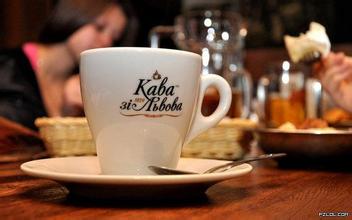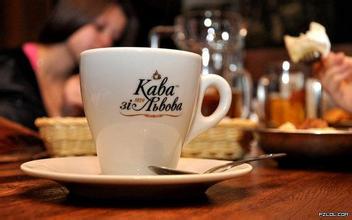Introduction to the planting environment of coffee trees in flowering and fruiting cycle
Introduction to the planting environment of coffee trees in flowering and fruiting cycle
Generally speaking, Robusta beans are poor in taste, have 2 to 3 times the caffeine content of Arabica beans, and are cheap, mostly for the large coffee industry to produce instant coffee or low-cost comprehensive products. Arabica coffee trees are suitable for growing on fertile hillsides with good drainage at an altitude of about 1,000 to 2,000 meters. The climate should not be too humid, but they still need a continuous rainy season and abundant rainfall.
During the day, they like mild but not very hot temperatures and less than two hours of direct sunshine, so if they lack the afternoon showers or thick fog to report every day, local farmers have to plant many taller trees in the coffee garden for shade. At night, they want an environment of about 10 degrees Celsius, but the temperature should not be too low, because too warm will make the coffee berries grow too fast to produce small, strong, hard and high-quality coffee beans. If it is too cold to frost, the coffee trees will freeze to death.
Based on these characteristics, the promised land suitable for Arabica coffee growth is mostly located in countries with alpine terrain between the Tropic of Cancer and the Tropic of Cancer, which is also known as the coffee belt (Coffee Zone/Coffee belt).
At present, coffee, as an elegant, fashionable and high-grade beverage, has long been popular all over the world, and has been listed as the first of the three major beverages (coffee, tea and cocoa) in the world. Coffee is also grown in 76 countries and regions all over the world. In 1983-1984 alone, the world's coffee output reached 5.5 million tons, with exports of 4.2 million tons. Among them, Brazil in South America, known as the "coffee kingdom", has the largest production and export volume. In spite of this, the hometown of coffee is not in Brazil, but in Ethiopia in Africa. To this day, there is still a large area of wild coffee forest in the dense jungle of the southwestern province of Cafa. The word "coffee" comes from the place name "Kafa".
Native to Brazil, it is another hybrid tree species; somewhere between CATURRA and MUDO NOVO. The tree is usually low in shape, but slightly taller than CATURRA and easy to harvest, and the coffee fruit begins to bear fruit in late summer. It has more sour taste, and a good sour taste, like lemons and oranges, makes you secrete salivary acid, which is the characteristic of high-quality ARABICA coffee beans usually produced at high altitude and high density. Its good sour taste will not upset your stomach, but can provide a function to clear the taste and boost the mind. Professional coffee connoisseurs appreciate the medium to deep roasting performance of CATUAI. It releases strong tobacco aroma and fresh, lively sour taste, coupled with a thick, thick fat (CREAMA), is the best lover who prefers "espresso"! This variety is very popular in Japan.
CATURRA [Katula] was first found in Brazil and is also the result of hybridization with BORBON. Its plant is short and compact, so it has more shade, forming a good windproof effect, so that its flowers are not easy to be blown down by the wind, and bear more fruit. CATURRA tastes like BORBON (American whisky) with a thick soup-like feel and a deep syrup-like ultra-high fat, creamy mouthfeel. Medium acidity, with slightly acidic and sweet dark chocolate finish in medium and deep roasting, is an unforgettable espresso. PACAMARA was first found in El Salvador (Central America). It continues to develop because of its suitable natural environment and good planting under the loose soil of volcanic ash. It is famous for its extra-large bean shape and clear and pure taste. Overall: PACAMARA is a multi-flavor, rich coffee bean. Elegant soft and sour taste, with berry-like fruit aromas throughout, with a pleasant and satisfying taste in the finish. PACAMARA is one of the hybrids of BORBON, so it has the soft and sweet characteristics of BORBON. In the performance of medium baking, it has a bold but sour and bitter taste, and has a nutty taste, while in deep baking, it has dark chocolate flavor.

Important Notice :
前街咖啡 FrontStreet Coffee has moved to new addredd:
FrontStreet Coffee Address: 315,Donghua East Road,GuangZhou
Tel:020 38364473
- Prev

The standard espresso cup has a capacity of multiple milliliters.
Standard espresso cup pull flower cup is multi-milliliter capacity extraction esp there are generally two ways: one is direct extraction, the second is pre-immersion extraction, then where is the difference between the two extraction methods, first of all, if the amount of powder, grinding, fresh state of beans and water temperature and time are the same, the extraction rate of ESP extracted by pre-soaking must be higher than straight.
- Next

Detailed steps on how to fold hand-brewed coffee filter paper and filter cloth
Manual coffee filter paper and filter cloth how to fold detailed steps to improve the thickness difference is only one of the problems, and then to solve the problem of adjusting the exhaust volume. Pressing the filter paper of different thickness together is to simulate the initial draught of flannel, but it is still impossible to use the filter paper alone to adjust the amount of water, so a filter cup is also needed. Many people misunderstand the filter cup.
Related
- What brand of black coffee is the most authentic and delicious? what are the characteristics of the flavor of the authentic Rose Summer Black Coffee?
- Introduction to the principle and characteristics of the correct use of mocha pot A detailed course of mocha pot brewing coffee is described in five steps.
- Which is better, decaf or regular coffee? how is decaf made?
- How much is a bag of four cat coffee?
- How about four Cat Coffee or Nestle Coffee? why is it a cheap scam?
- Which is better, Yunnan four Cats Coffee or Nestle Coffee? How about cat coffee? is it a fake scam? why is it so cheap?
- How about Cat Coffee? what grade is a hoax? which instant coffee tastes better, four Cat Coffee, Nestle Coffee or G7 coffee?
- Process flow chart of coffee making-Starbucks coffee making process what coffee tastes good at Starbucks
- The top ten best coffee beans in the world Rose summer coffee or Tanzanian coffee tastes good
- Yunnan four cat coffee is good to drink?_four cat coffee is a big brand? four cat blue mountain coffee is fake?

